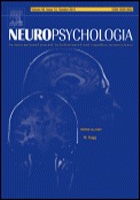Saxe et al, 2004
Neuroanatomie des actes intentionnels
Mis à jour le lundi 27 mars 2017 19:10  Saxe R., Xiao D.-K., Kovacsc G., Perrett D.I., Kanwisher N. (2004) A region of right posterior superior temporal sulcus responds to observed intentional actions. Neuropscyhologica 42, pp. 1435-1446.
Saxe R., Xiao D.-K., Kovacsc G., Perrett D.I., Kanwisher N. (2004) A region of right posterior superior temporal sulcus responds to observed intentional actions. Neuropscyhologica 42, pp. 1435-1446.
AbstractHuman adults and infants identify the actions of another agent based not only on its intrinsic perceptual features, but critically on the contingent relationship between its motion path and the environmental context [Trends Cogn. Sci. 7 (1995) 287; Cognition 72 (2003) 237]. Functional neuroimaging studies of the perception of agents and intentional actions, on the other hand, have mostly focussed on the perception of intrinsic cues to agency, like a face or articulated body motion (e.g. [J. Neurosci. 17 (1997) 4302; Neuroimage 8 (1998) 221; Trends Cogn. Sci. 4 (2000) 267; Nat. Neurosci. 3 (2000) 80; Neuroimage 13 (2001) 775; Proc. Natl. Acad. Sci. U.S.A. 98 (2001) 11656; Neuron 35 (2002) 1167; Neuron 34 (2002) 149, Neuroscience 15 (2003) 991; J. Neurosci. 23 (2003) 6819; Philos. Trans. R Soc. Lond. B. Biol. Sci. 358 (2003) 435]. Here we describe a region of the right posterior superior temporal sulcus that is sensitive not to articulated body motion per se, but to the relationship between the observed motion and the structure of the surrounding environment. From this and other aspects of the region’s response, we hypothesize that this region is involved in the representation of observed intentional actions. Consulter/Télécharger |
 Saxe R., Xiao D.-K., Kovacsc G., Perrett D.I., Kanwisher N. (2004) A region of right posterior superior temporal sulcus responds to observed intentional actions. Neuropscyhologica 42, pp. 1435-1446.
Saxe R., Xiao D.-K., Kovacsc G., Perrett D.I., Kanwisher N. (2004) A region of right posterior superior temporal sulcus responds to observed intentional actions. Neuropscyhologica 42, pp. 1435-1446.
